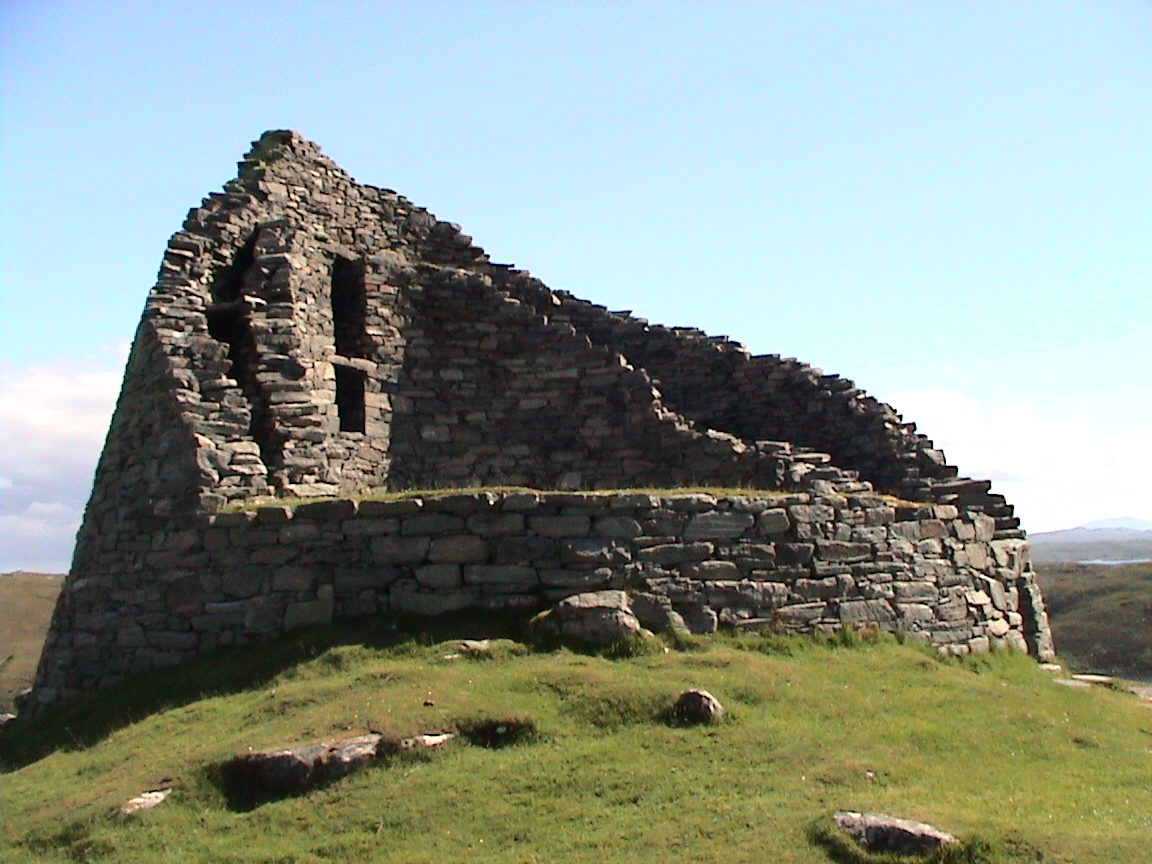|
Burra Voe
Burra Voe ( non, Borgavagr, Broch Bay) is sheltered bay (voe) at the southeast corner of the island of Yell. The village of Burravoe Burravoe is a community on the north shore of Burra Voe, in the south-east part of the island of Yell in the Shetland Islands, Scotland. The name Burravoe is derived from the Old Norse ''Borgavágr'', meaning ''broch bay''. The most notable ... (HU525795) is on the north coast of Burra Voe. Sources * This article is based on http://shetlopedia.com/Burra_Voe GFDL wiki. Voes of Shetland {{Shetland-geo-stub ... [...More Info...] [...Related Items...] OR: [Wikipedia] [Google] [Baidu] |
Broch
A broch is an Iron Age drystone hollow-walled structure found in Scotland. Brochs belong to the classification "complex Atlantic roundhouse" devised by Scottish archaeologists in the 1980s. Their origin is a matter of some controversy. Origin and definition The word ''broch'' is derived from Lowland Scots 'brough', meaning (among other things) fort. In the mid-19th century Scottish antiquaries called brochs 'burgs', after Old Norse ', with the same meaning. Place names in Scandinavian Scotland such as Burgawater and Burgan show that Old Norse ' is the older word used for these structures in the north. Brochs are often referred to as '' duns'' in the west. Antiquarians began to use the spelling ''broch'' in the 1870s. A precise definition for the word has proved elusive. Brochs are the most spectacular of a complex class of roundhouse buildings found throughout Atlantic Scotland. The Shetland Amenity Trust lists about 120 sites in Shetland as candidate brochs, while the ... [...More Info...] [...Related Items...] OR: [Wikipedia] [Google] [Baidu] |
Yell, Shetland
Yell ( sco, Yell) is one of the North Isles of Shetland, Scotland. In the 2011 census it had a usually resident population of 966. It is the second largest island in Shetland after the Mainland with an area of ,Penrith, James & Deborah (2007) ''Orkney & Shetland'' (part of ''The Scottish Islands'' series). Richmond. Crimson Publishing. and is the third most populous in the archipelago (fifteenth out of the islands in Scotland), after the Mainland and Whalsay. The island's bedrock is largely composed of Moine schist with a north–south grain, which was uplifted during the Caledonian mountain building period. Peat covers two-thirds of the island to an average depth of . Yell has been inhabited since the Neolithic times, and a dozen broch sites have been identified from the pre-Norse period. Norse rule lasted from the 9th to 14th centuries until Scottish control was asserted. The modern economy of the island is based on crofting, fishing, transport and tourism. The island ... [...More Info...] [...Related Items...] OR: [Wikipedia] [Google] [Baidu] |
Burravoe
Burravoe is a community on the north shore of Burra Voe, in the south-east part of the island of Yell in the Shetland Islands, Scotland. The name Burravoe is derived from the Old Norse ''Borgavágr'', meaning ''broch bay''. The most notable building is the Old Haa Museum which dates from 1637 (and may have been completed in 1672) and is the oldest house on Yell. Canmore. Retrieved 17 December 2014. On 19 January 1942, a Catalina aeroplane crashed on the hill above Burravoe. Seven of her ten crew were killed, and one of the propellers can be seen outside the Old Haa Museum.Penrith, ... [...More Info...] [...Related Items...] OR: [Wikipedia] [Google] [Baidu] |

